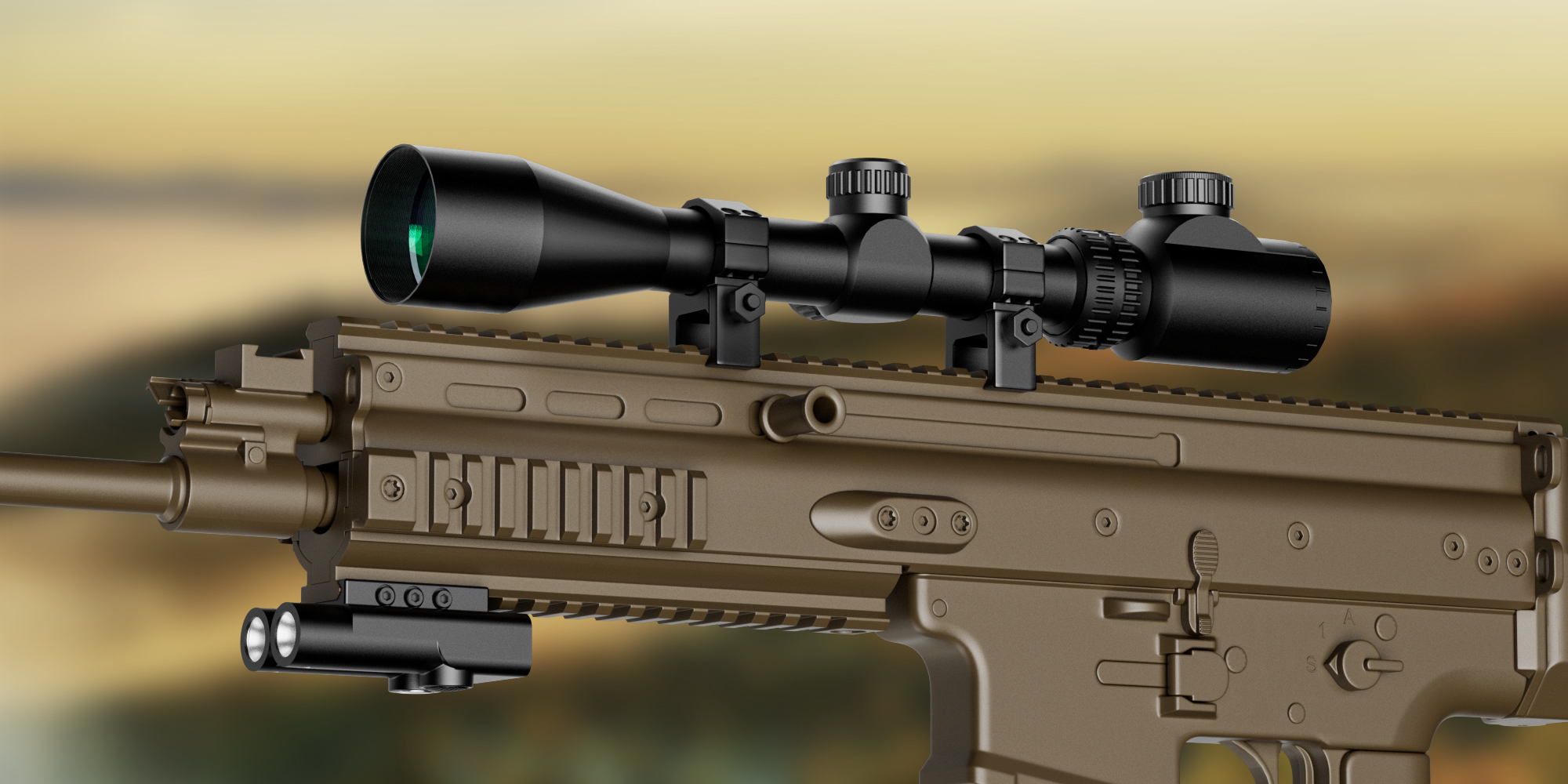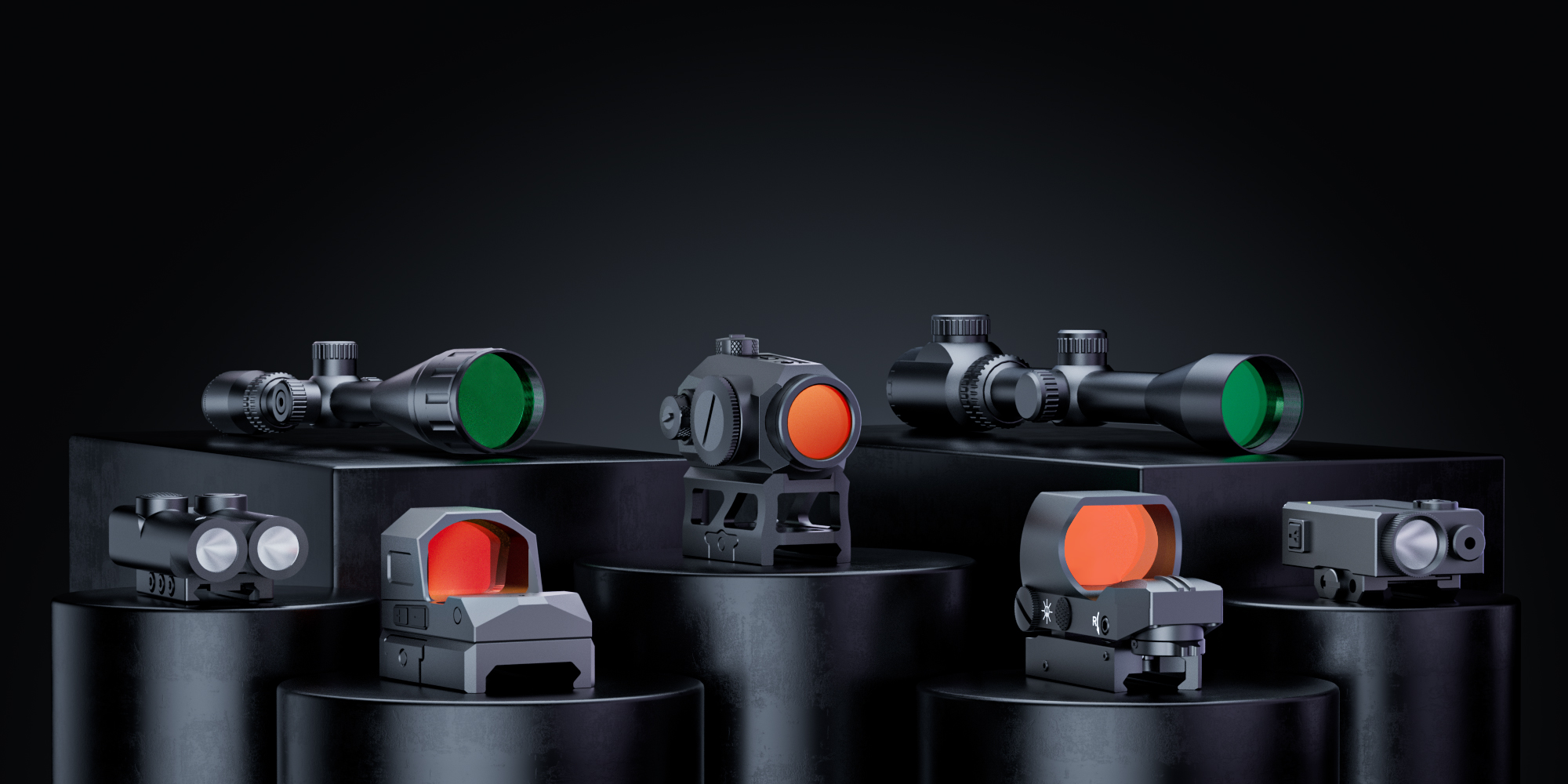
When you're choosing a rifle scope, the numbers on the scope’s label can be a bit overwhelming. These numbers aren’t just random; they tell you a lot about what the scope can do and how it will perform in various shooting situations. Understanding these numbers is essential for selecting the right scope for your shooting needs, whether you’re a hunter, competitive shooter, or tactical professional. In this article, we’ll break down what those numbers mean and how they impact your shooting experience.
Choosing the right rifle scope can dramatically improve your shooting accuracy. The numbers on a rifle scope's label, such as "4x32" or "3-9x40", refer to essential features that can help you decide which scope is best for your specific needs. By understanding these numbers, you can make better-informed decisions about magnification, lens size, and adjustments that will enhance your shooting performance.

A typical rifle scope label, such as "3-9x40," is made up of two main numbers: the magnification power and the objective lens diameter. Understanding what each number refers to can help you choose the right scope based on your shooting distance, target, and environmental conditions.
The first number on your scope’s label (e.g., "3" in 3-9x40) refers to the magnification power of the scope. This number tells you how much closer the target will appear through the scope. For example, a 3x magnification means that the target will appear three times closer than it would with the naked eye.
Magnification affects how clearly you can see your target at a distance. A higher magnification (like 9x or 12x) is better for longer distances and smaller targets, while lower magnification (like 3x or 4x) is ideal for closer-range shooting, where you need a wider field of view.
Choosing the right magnification is essential, as too much magnification can narrow your field of view, making it harder to track moving targets. If you’re hunting big game at close ranges, lower magnification (3-5x) is ideal. For long-range shooting, a higher magnification (8-12x) will provide the precision you need.
The second number in a scope’s designation (e.g., "40" in 3-9x40) refers to the diameter of the objective lens (the lens furthest from your eye). A larger objective lens lets more light into the scope, which is especially important in low-light conditions like early morning or late evening. A 40mm objective lens provides a good balance of light gathering without making the scope too bulky.
Larger objective lenses (50mm or more) are ideal for low-light environments, but they can make the scope heavier and increase the overall size. Smaller objective lenses (32mm or 36mm) keep the scope compact and lightweight, making them better for hunters who need to move quickly through dense terrain.
Beyond magnification and lens size, rifle scopes often include additional markings or features related to adjustments. These adjustments are typically found on the turrets of the scope and allow you to fine-tune your aim for windage (horizontal adjustments) and elevation (vertical adjustments).
The numbers found on the turrets often represent the adjustments in terms of Minute of Angle (MOA) or Milliradian (MRAD). For example, a scope with "1/4 MOA" adjustments means each click of the turret will move the point of impact by 1/4 of an inch at 100 yards. These adjustments allow for precise alterations to your aim, helping you compensate for distance, wind, and other shooting conditions.
In addition to the numbers for magnification and lens size, you’ll also encounter different types of reticles, which are the crosshairs or aiming points inside your scope. Reticles like the BDC (Bullet Drop Compensation), Mil-Dot, or standard crosshairs are designed for various types of shooting.
The BDC reticle is particularly useful for long-range shooting, as it helps compensate for bullet drop over distance. Mil-Dot reticles allow shooters to estimate range and adjust for bullet drop and windage, making them a popular choice for tactical shooters. Understanding the reticle type will help you choose a scope that fits your shooting style and needs.
Another key feature reflected by the scope's specifications is the eye relief, which refers to the distance between your eye and the ocular lens while still being able to see the full image. For many scopes, this measurement can range from 3 inches to over 4 inches.
Adequate eye relief is important, especially for powerful rifles that have significant recoil. It ensures that you can use the scope comfortably and avoid injury from recoil. If you wear glasses, eye relief becomes even more crucial, as you’ll need to maintain a comfortable distance between your eye and the scope.
The field of view (FOV) is the width of the area you can see through the scope at a given distance. The higher the magnification, the smaller the field of view, which can make tracking moving targets more difficult. For close-range or rapid-moving targets, a scope with a wider FOV is preferred. For long-range shooting, a narrower FOV is often acceptable as the target is stationary and smaller.
Scopes with larger objective lenses tend to have a wider FOV, though this is also influenced by the magnification power. A good balance of magnification and FOV is key to ensuring you can both see and track your target effectively.
Many rifle scopes come with additional features, including waterproof, fog-proof, and shockproof specifications. These features ensure that your scope performs well in all conditions, from heavy rain to extreme recoil. While these features may not be reflected directly in the scope's numerical designation, they are important to consider based on your shooting environment.
Understanding the numbers on your scope label helps you choose the right one for your shooting needs. If you’re hunting at short ranges, look for scopes with lower magnification (3-5x) and a smaller objective lens (32-40mm). For long-range shooting, opt for a higher magnification (8-12x) and a larger objective lens (50mm or more).
Your choice will also depend on the type of shooting you do. Tactical shooters may prefer scopes with specialized reticles like Mil-Dot or BDC, while hunters may prioritize lightweight, compact scopes that are easy to carry on long hikes.
Understanding the numbers on a rifle scope is essential for making an informed decision about which one will best suit your shooting needs. By learning what the magnification, objective lens diameter, and other features mean, you can select a scope that will help you shoot with accuracy and confidence. Whether you're hitting the range, hunting, or involved in tactical operations, knowing the specifications behind your scope can make a significant difference in your performance.
Take the time to consider your shooting style, distance, and environment, and choose a rifle scope that aligns with your needs. By doing so, you’ll be ready for any challenge that comes your way.